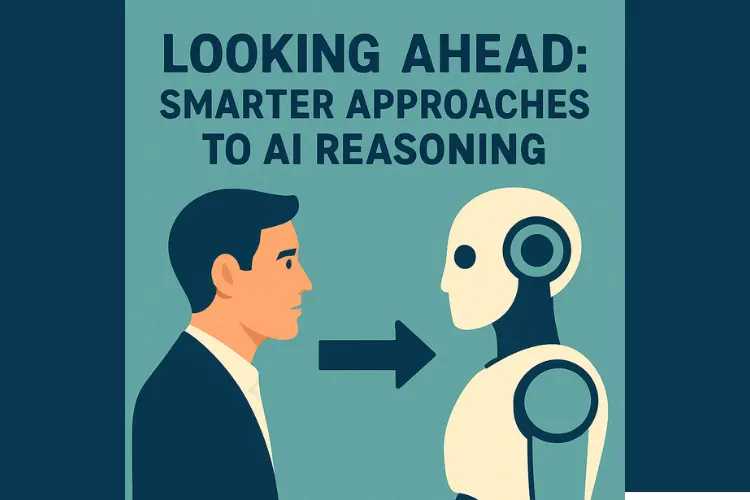Opening: When “Deeper Thinking” Backfires
Tech vendors sell the idea that extra reasoning makes AI smarter. The message is everywhere: longer chains, richer answers, premium performance. Yet independent analysis paints a very different picture. Lengthy reasoning often weakens results and increases costs. Data from Anthropic’s Claude shows the model loses focus when chains get too long. OpenAI’s systems can also wander or overfit. This post breaks down why the “more is better” promise misleads buyers and how to protect your budget.
How the “Longer = Smarter” Myth Took Hold
Big outputs look impressive. A two-page answer feels more intelligent than a paragraph. But large language models don’t reason like people. They predict the next word based on training data. Each extra prediction adds noise. The longer the chain, the higher the risk of irrelevant or wrong details.
Firms monetize that perception. They market extended reasoning as a premium feature and bill per token or per request. Businesses think they’re paying for intelligence, but often they’re buying extra text without extra value.
What the New Findings Really Indicate
Anthropic’s internal tests on Claude uncovered a counter-intuitive pattern: accuracy can decline as the model’s reasoning grows longer. Instead of converging on a correct answer, it starts drifting—much like a person who overcomplicates a simple question. OpenAI’s systems show a different but related symptom: long outputs can overfit patterns and miss the point. Both issues reflect a structural weakness rather than a small bug.
Why Providers Still Push Extended Reasoning
Two main drivers explain why companies highlight longer reasoning:
Revenue. Every extra token costs the customer but earns the vendor. Extended chains are profitable.
Psychology. People assume length equals depth. Vendors design outputs that feel thoughtful even if shorter chains would be more accurate.
Together these drivers create a costly illusion of intelligence.
Impact on Real-World Users
Long reasoning chains aren’t just a pricing issue—they can harm reliability. If an AI doubles the token count, your bill doubles too. In high-volume environments this can drain budgets quickly. At the same time, quality can decline, eroding trust and slowing decision-making.
Picture a support chatbot producing long, wandering answers. Customers leave confused, and staff must step in. A fractional CTO reviewing tools for a startup would immediately flag these hidden costs. Tighter prompts and shorter reasoning chains usually cut both expenses and errors.
Claude’s Distraction vs. OpenAI’s Overfit: Same Root Cause
Although the symptoms differ—Claude’s drifting vs. OpenAI’s overfitting—the root issue is the same: error accumulation. Language models generate probabilities, not truths. As a chain stretches out, those probabilities compound and the model strays from the original question.
This isn’t something a simple parameter tweak will fix. Until architectures change, long chains will remain risky. Buyers need to know this before committing to expensive AI deployments.
Extended Reasoning: Innovation or Expensive Illusion?
Vendors frame extended reasoning as a leap toward human-like thought. But at its core it’s still sequential prediction. More steps add more noise. Organizations must ask: are we paying for genuine insight or for text that looks impressive but delivers less?
With AI adoption accelerating, treating “longer is better” as fact can waste budgets on features that undermine accuracy.
Five Steps to Protect Your Business
1. Test Short vs. Long Chains Yourself
Measure accuracy and cost side by side. Don’t rely on marketing claims.
2. Demand Independent Benchmarks
Request published accuracy metrics for different reasoning lengths. Transparency helps you compare vendors fairly.
3. Use Focused Prompts
Clear, concise instructions often beat step-by-step requests. You’ll save tokens and reduce errors.
4. Involve a Fractional CTO
A fractional CTO can evaluate AI systems from both technical and financial angles. Startups gain senior expertise without paying for a full-time executive.
5. Keep Human Review in the Loop
No model is infallible. Establish feedback processes to catch drift early and protect quality.
Looking Ahead: Smarter Approaches to AI Reasoning
Current large language models may be reaching a reasoning limit. Emerging methods—like retrieval-augmented generation, tool-using agents, and modular workflows—seek to break tasks into smaller, verifiable pieces. These approaches aim to reduce error buildup and keep answers grounded.
Until such methods mature, think of extended reasoning as a trade-off. Test before you pay and optimize your prompts to avoid unnecessary costs.

Conclusion: Time to Re-Evaluate the “Longer Is Better” Story
Extended reasoning has become a headline feature in AI marketing. But evidence shows it often leads to lower accuracy and higher bills. Providers profit from your token usage, not necessarily from your success. Before you invest in “deeper thinking,” check whether it actually helps.
Startups and enterprises can benefit from an independent review. A fractional CTO can assess vendors, streamline your AI strategy, and ensure technology choices deliver measurable value. For clear, research-driven insights into emerging tech, follow StartupHakk—we break down complex issues so you can make smarter decisions.




